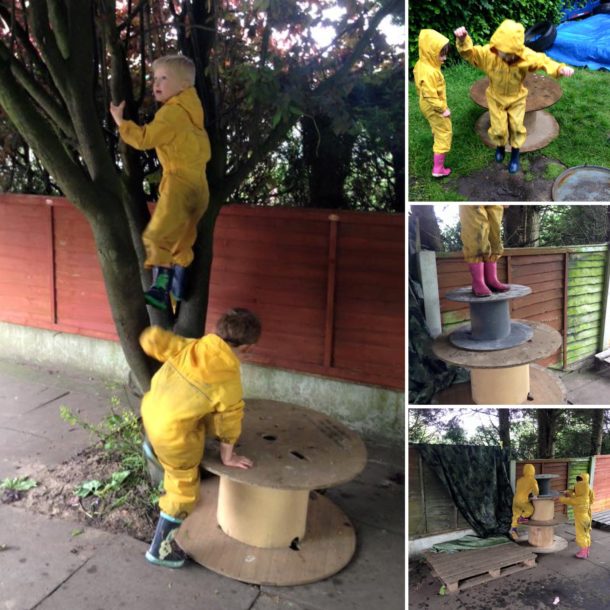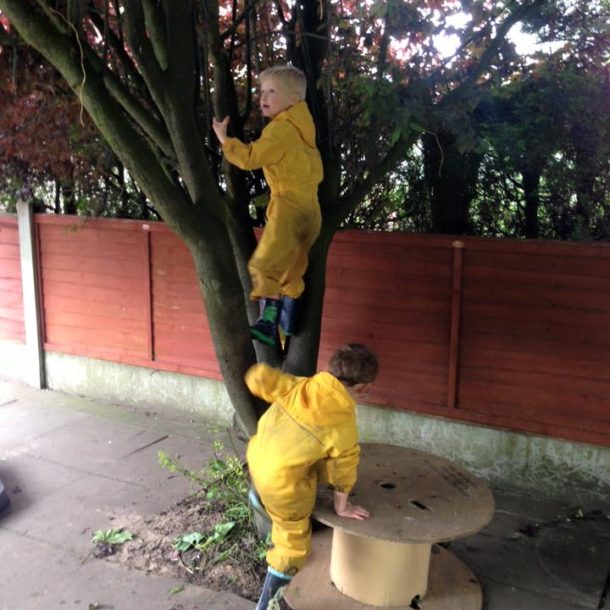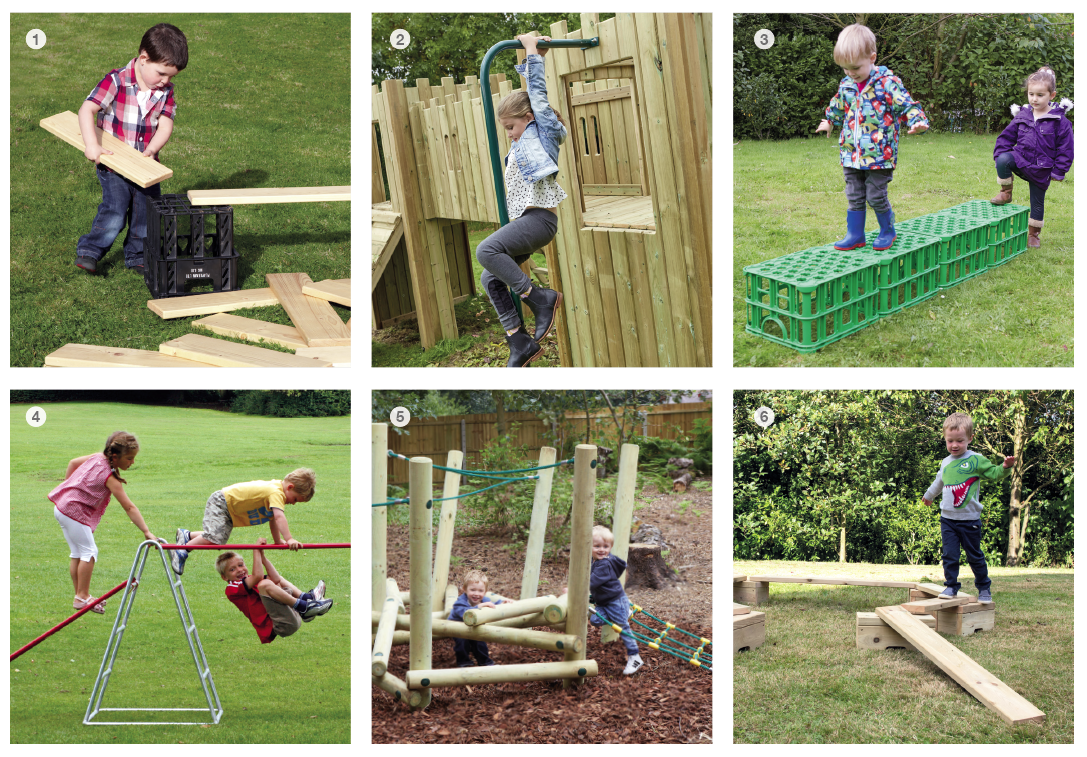Risky Play is a topic which is being widely discussed. It is a valuable part of children’s play. Health and safety is a major priority, but risk taking needs to be recognised as an important part of children’s lives. It has many benefits such as engaging boys, building creative learners and developing necessary life skills such as negotiation, turn taking and team work. As adults, we can facilitate children’s learning through risk taking.
Children take risks from the minute they are born; they are natural risk takers as they learn to roll, crawl and walk. Practitioners need to embrace this and continue to allow it, in turn promoting lower risk of actual harm. By teaching children how to manage risks they will become aware of safe ways to jump off the top of the slide, climb trees and use tools; rather than doing it the minute you turn your back. Practitioners are often worried about children hurting themselves and in the past I have, myself, regimented the way in which the slide is used, saying, ‘Don’t jump off the top!’, ‘Don’t climb up the slide!’, ‘Don’t go down head first!’, followed by a thorough explanation of the consequences. I can tell you now that this approach only made the slide less appealing. We have come so far since the days of being overly protective and now my cohort use the slide as they please. I allow them to stand on the roof of the slide, run up the slide, jump over the slide and I even allow them to climb the sides of the slide – the crucial difference being that I am in control.
The risk of a few scuffed knees and bruised elbows is far outweighed by the learning which takes place. Using the slide as an example, not only are children developing their physical skills but they are taking turns and communicating to avoid collisions. They are negotiating ways to run up the slide, testing out theories and sharing experiences. ‘It’s easier if you take your socks off’, ‘No, you need to run faster’, ‘Try from further away’ and ‘I will grab you at the top’, are all comments I have heard a boisterous group of boys say whilst deliberating on how best to help another boy reach the top of the slide. Sometimes they spend more time communicating and thinking critically than actually taking the risks.
Risky play does not only encompass each area of learning but it brings the characteristics of effective learning to the forefront; building confident, willing, independent, creative learners is vital as these skills are the skills for life. We cannot begin to imagine the types of subject knowledge our children will need to engage with in the future, particularly with the rise of ever-new technology, but we can ensure that they have the right attitude and mental well-being to cope. Risk taking appeals to all but it particularly engages those children that cannot sit still and listen for long periods of time (something which cannot be expected of many young children). As practitioners we should embrace this style of learning and exploit it to our advantage.
In practice, I have found the best way to manage risks is to talk about them with the children as they are playing because this is the time it is most relevant to them. When children are playing with large loose parts such as cable reels, crates and wooden planks (great open ended resources!) they often build structures which require lifting and balancing cumbersome objects. Talking to the children about how the objects should be carried, perhaps suggesting different numbers of people dependent on the weight and size, will minimise associated risks. Talking through with the children that they need to let go of a positioned object slowly to ensure it will stay in place also minimises associated risks. However, always be aware that as a facilitator you want the children to use their own knowledge, so don’t give them the answers but make comments such as,‘That looks too heavy for one person’ and ‘I don’t know if that is small enough to fit on top’, which will trigger them to think about it too.
Other activities carrying an element of risk include using tools such as hammers and screwdrivers, as well as everyday objects including staplers, scissors and punches. These tools require a calm, quiet space and you will find that even the most energetic children can and will focus during this type of activity. Modelling how to use these tools one to one, is beneficial and once children have the skills to use them, many will be able to manage the risks independently. With regards to woodwork it is always best to have an adult present at all times and the correct safety measures put in place. I would recommend attending training in relation to this.
So next time your cohort are jumping, climbing, lifting, building and using tools, think about all the learning that is taking place and how you can further facilitate this; for example, you might provide clipboards and tape measures allowing them to create designs and measure their jumps. Comment on the risks they are taking to make them aware of them and act as a mediator when decisions can’t be reached.
With thanks to Laura England for writing this blog post. Laura is an early years enthusiast and trainee early years teacher based in Staffordshire. Visit her website Little Miss Early Years and take a look at her Facebook page: Little Miss Early Years.
//blog.tts-group.co.uk/2016/03/29/how-to-do-outdoor-play-well-by-alistair-bryce-clegg/






